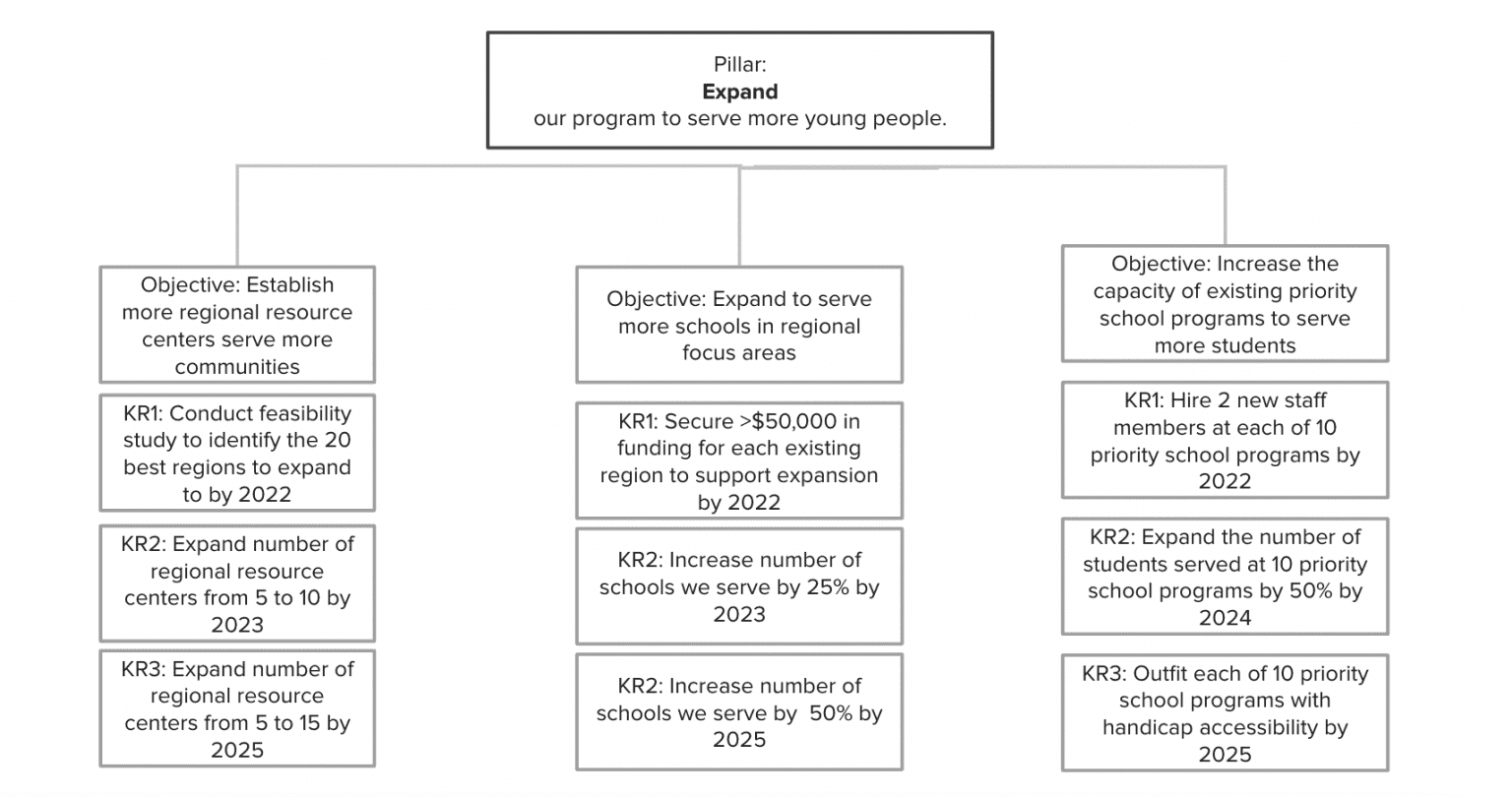Nonprofit strategic plans are visionary, inspirational and full of big picture ideas. They push organizations to think beyond the day-to-day and come up with “net new” strategies for advancing missions and driving change.
A strategic plan is quite different from a nonprofit operational plan, which is tactical, logistical, and full of detailed action items. However, it’s common for some nonprofit leaders and board members to confuse these two important types of plans by trying to make their strategic plans too operational.
It’s also common for groups to get overwhelmed when it comes time to execute on a truly visionary strategic plan. Often, someone on staff will say something along the lines of “all of this is really great, but how am I supposed to get all of my other work done?” This is the force of gravity trying to bring nonprofit strategic planning teams back to the status quo, to where things feel comfortable again. And it’s a force that can be reckoned with only once you have a clear understanding of the role a strategic plan should play at your organization, versus the role an operational plan should play.
In this post, we’ll break down the differences between nonprofit strategic plans and nonprofit operational plans and how the two can work together to help you achieve your nonprofit’s goals.
What is a nonprofit strategic plan?
A nonprofit strategic plan guides the overall strategic direction of your nonprofit. It typically includes a set of overarching themes or guideposts, which we call pillars, along with objectives for how each pillar will come to life, and key results that articulate how you will measure each objective.

Importantly, the things that make into the strategic plan should be new, significant strategies that otherwise would not be pursued. This does not count things you know you should be doing but just haven’t made the time for, like regularly posting on your social media channels, or improving your hiring process.
Strategic plans must deal with items outside of the day-to-day in order for organizations to truly push the boundaries and make significant leaps forward.
Examples of things that often make it into a nonprofit’s strategic plan include:
- Mission growth (or downsizing)
- New programs or initiatives
- Revenue diversification
- New, significant brand initiatives
- New, significant fundraising initiatives
- A change in the organization’s focus (mission focus, geographic focus, beneficiary focus etc.)
Your strategic plan, and the pillars, objectives and key results within it, should be set up to drive transformation, not just optimization. Externally, your strategic plan can be designed to inspire people to join your mission and can also be used as a fundraising tool.
What is a nonprofit operational plan?
A nonprofit operational plan guides the day-to-day work of your nonprofit. It details the specific activities that need to take place and the resources needed to support your nonprofit’s strategic plan and its other mission-critical work.
So, when someone asks during strategic planning, “how am I supposed to get all of my other work done,” it’s actually that all of that other work now needs to be re-evaluated through the lens of your new nonprofit strategic plan.
Examples of things that can be included in your operational plan (versus your strategic plan):
- The activities and tasks you need to complete in service of your strategic plan (in support of each strategic plan key result)
- The activities and tasks you need to complete in service of your mission and existing programs (outside of the new things in the strategic plan)
- Processes, policies and procedures
- Ongoing program planning and support
- Ongoing marketing and fundraising efforts
- HR and staff related efforts
- Operational, technology and infrastructure optimization efforts
- Budgets for all of the above
Where does a nonprofit’s budget belong?
Importantly, your budget should live within your operational plan, not your strategic plan. Why? The biggest reason is that the strategic plan should guide your budget, your budget should not guide your strategic plan. Some might say that this leads to unrealistic strategic planning – but this is why it is so important to use systems like objectives and key results that will help you set realistic, measurable goals that can be budgeted for.
While you may do some work with your CFO or others to ensure your objectives and key results are financially feasible, the deep work of detailed budgeting should be part of your operational planning process (which should happen at least annually). It should not be part of your strategic planning process (which typically happens every 3-5 years).
Where does Prosper Strategies play a role?
At Prosper, we focus on strategic planning, not operational planning. That said, we know that most organizations enter into the strategic planning process with a significant number of operational concerns to address, and that every organization must balance the visionary pillars of its strategic plan with the day-to-day demands of maintaining existing programs and services. That’s why we teach a type of operational planning called activity planning to teams during the strategic planning process. The activity planning process helps teams map out (in fine detail) what they need to do over the next quarter to bring their strategic plans to life. Teams can then build on their activity plans with additional plans for their existing day-to-day work and operational needs.
If you’re enjoying nerding out on nonprofit planning as much as we are, here are a few additional resources that might be of interest: